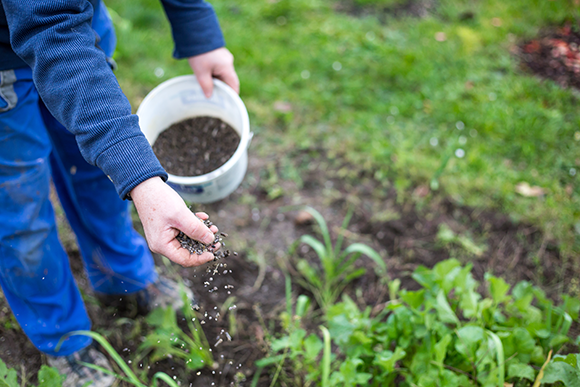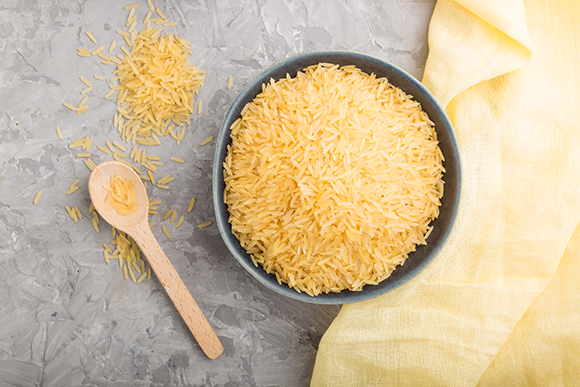Exploring ways to address the increasing global food demand through innovative agricultural and biotechnological approaches
According to the World Health Organization (WHO), 200 million children under the age of five are too short for their age or too thin for their height due to undernutrition. Equally pressing is the fact that 2.5 billion people worldwide suffer from micronutrient deficiencies, a form of malnourishment characterized by inadequate intake of minerals or vitamins, most commonly iron, vitamin A and iodine. This deficiency primarily threatens the development and health of children and pregnant women in low-income countries.
Biofortification offers a potential solution for malnutrition, by enhancement of the nutrient, mineral or vitamin content of food crops and other plant-based food products. It can be achieved through modern biotechnology methods, traditional plant breeding techniques, or agricultural processes.
Biofortification Via Plant Breeding
Since the dawn of agriculture, humans have been selecting and crossing plants to produce sweeter fruits, larger flowers, and enhanced flood resistance. Biofortification via plant breeding works similarly, aiming to crossbreed plants with the highest measured vitamin, mineral or nutrient content, or to create hybrids of low-micronutrient modern crops with their high-micronutrient wild counterparts.
A biofortified sorghum hybrid recently introduced in Nigeria has three times higher iron content than typical sorghum breeds. This development is anticipated to combat both iron-deficiency and the concurrent anemia in children and pregnant women in the region. To put this into perspective, an estimated 68% of children in Nigeria suffer from anemia, compared to about 6% of children affected in the USA.
Plant breeding-based biofortification is the most reliable method, and has been successfully used to increase the micronutrient content of maize, wheat and other crops. However, this method is limited by the inherent genetic makeup of individual plant species and their close relatives, since only plant species that are closely related can be crossbred.

Plant breeding-based biofortification has been successfully used to increase the micronutrient content of crops. Image: Shaiith, Shutterstock
Biofortification Via Agricultural Enhancement
Most non-living things are made of inorganic materials, such as nitrogen and oxygen in the air, table salt and various metals. Materials that contain chemical bonds between carbon and hydrogen are termed organic, and these make up the building blocks of living organisms. Examples of organic compounds include DNA, proteins, fats and alcohol. In order to be absorbed in the human intestine and made available for metabolism, most minerals need to be bound to an organic compound. Biofortification via agricultural application aims at increasing the availability of inorganic minerals for crops, enabling them to incorporate these minerals and convert them into their organic forms, hence increasing the organic mineral content of the plants.
Finland initiated the practice of applying fertilizers supplemented with selenium on wheat in 1984. Studies have since shown a corresponding increase in human serum selenium levels in the country.
This method has also been used to increase the content of biominerals such as iodine, zink, cobalt and others. Supplementing the soil with growth-promoting bacteria and fungi not only boosts the growth rate of crops but also enhances the availability of nutrients in the soil for uptake by plants.
While agricultural biofortification is effective and cost-efficient, it needs to be repeatedly reapplied. Moreover, fertilizers that get washed away can potentially harm the nearby natural environment.

Biofortification Via Biotechnology
Modern biotechnological methods and genome engineering can be used to incorporate novel genes, or even entire new pathways into plant species.The first and most famous example of biotechnological biofortification is golden rice, a rice variety developed to combat vitamin A deficiency (VAD), which affects 250 million people globally. VAD’s consequences include reduced immune function, leading to1-2 million preventable deaths annually, and blindness due to retinal and corneal damage, affecting an estimated 250 000 - 500 000 children every year.
Golden Rice is a yellow-hued rice variety developed in the 1990s using modern biotechnological methods. It contains genes originating from different organisms; two genes from the daffodil and one from bacteria, which together enable the rice to produce and accumulate beta-carotene, the precursor of vitamin A. Beta-carotene is converted to vitamin A in the human body after consumption.
After almost three decades of testing and legal debates, Golden Rice recently received positive food safety evaluations in the US, Canada and New Zealand. The Philippines became the first country to cultivate this variety, aiming to combat VAD, whichaffects about 20% of children in the country.
Using genome engineering for biofortification holds several advantages over breeding-based and agronomy-based methods, mainly due to the absence of limitations. Biotechnology can be used to simultaneously enhance the production of multiple micronutrients. Genes responsible for consecutive steps in new pathways, previously non-existent in the species, can be introduced using this technology. Moreover, genes from distantly related, and even from entirely unrelated species, can be integrated, such as with the incorporation of bacterial genes responsible for micronutrient production into crops. It is even possible to engineer fully synthetic genes with novel functions.
While biofortification via biotechnology is the most extensively researched of the three techniques, it has been applied the least in practice, mainly due to public skepticism surrounding genetically modified foods. Genetically engineered foods undergo rigorous food safety and security testing and in the last 30 years of extensive human and animal consumption of genetically modified crops in countries such as the US, Canada, Australia and Brazil, there have been no reports of harm to human health or the environment.

A rice variety developed to combat vitamin A deficiency and the most famous example of biotechnological biofortification - golden rice. Ceramic bowl with raw golden rice. Image: uladzimir zgurski, Shutterstock
Looking Ahead - The Future of Biofortification
In 2016, 160 Nobel prize laureates signed an open letter to the United Nations and governments worldwide, urging them to embrace the opportunities GMOs offer for improved nutrition and food availability. They emphasized that crops modified by modern biotechnology have repeatedly demonstrated safety and health benefits and have been found to be non-damaging for the environment.
Despite the clear stand of leading scientists, a general acceptance of genetic modification-based biofortification is still pending and only 26 countries currently cultivate GMO crops and plants.
With a rapidly growing global population, a combination of fairer food distribution practices and improved crop varieties will need to be employed in order to meet the increasing global food demand and ensure - the fundamental human right of access to adequate and sufficient nutrition for all.
